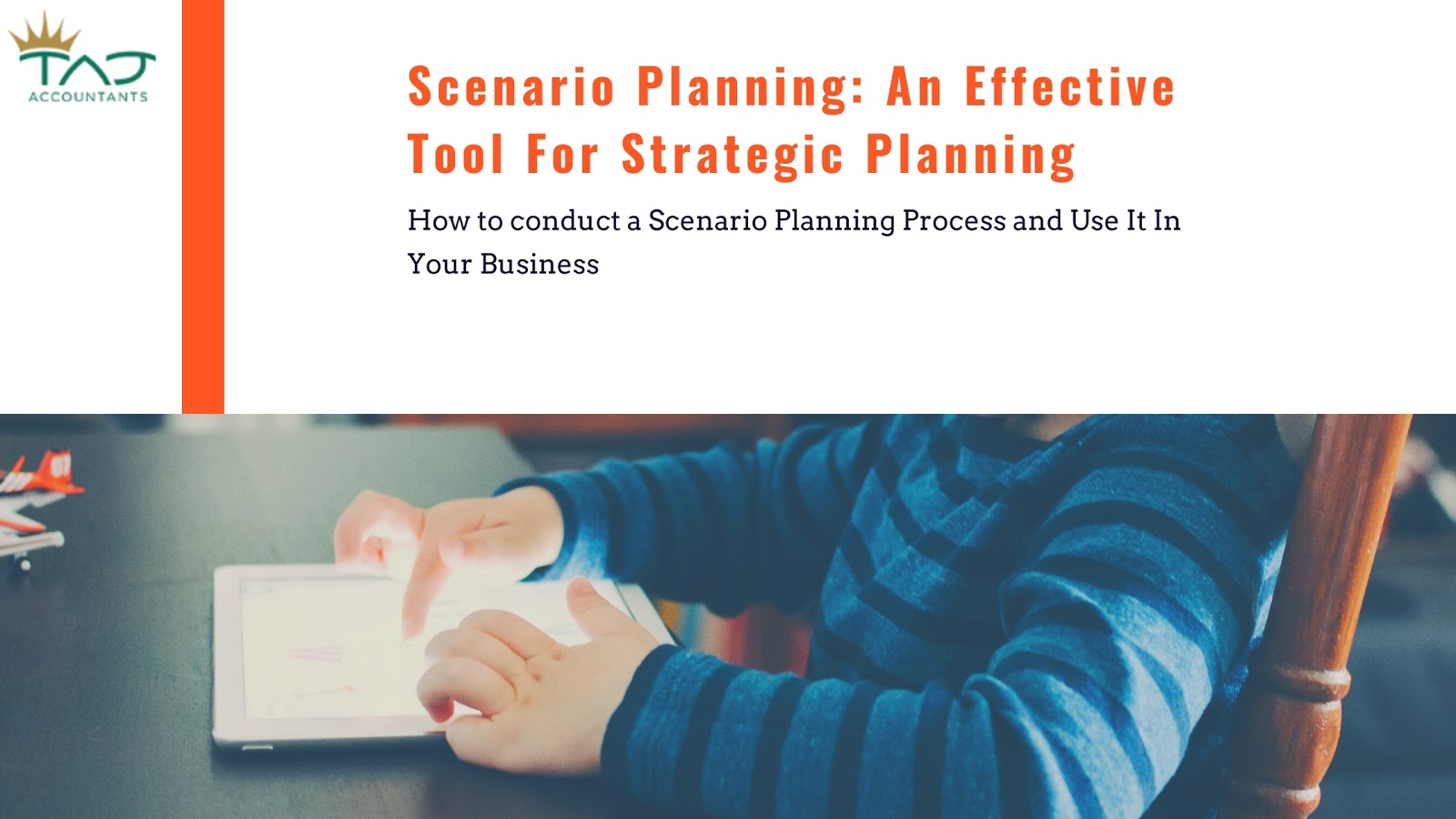Scenario Planning: An Effective Tool For Strategic Planning
How to conduct a Scenario Planning Process and Use It In Your Business
As a part of your business plan; you may have looked at the potential threats and opportunities with SWOT analysis, you may have also done the environmental analysis with the help of PESTEL. These analyses are helpful tools for your business but only as part of the short-term span with limited scenarios.
To make your business persistent in the changing and competitive business world, you cannot only rely on short-term strategies; you need to visualise a wider range of future possibilities. This is exactly where Strategic Planning can come in order to help you with risk reduction by predicting the future uncertainties, as part of a long-term plan.
What is Scenario Planning?
Scenario Planning is the process of predicting and assuming the future of a business by creating multiple reality-based scenarios. This planning is also known as scenario thinking or scenario analysis. It is a strategic planning method that, nowadays, most of the organizations in the UK use to make flexible long-term plans.
Why do you need to conduct scenario planning?
You should conduct scenario planning in order to mitigate risks for your business. The planning process aims to help you forecast the critical uncertainties that have the potential to affect your company in the long-run. The planning further aims to develop plausible scenarios for the potential impacts and the responses to give for each one of them. The point is, if you’re aware of the future scenarios, you are more likely to deal with what will happen.
How can Scenario Planning help my business?
Scenario planning can help you create multiple scenarios for the future. As part of the plan, you can predict multiple scenarios for the futures based on some uncertainties and create multiple future environments or realities. It’ll help you mitigate risk and create plans for the future depending on different points of uncertainties. In the long-term, it can guide you through your decision making and help you avoid any possible risk that may harm your business. Many reliable Accountants in London can provide you advice on conducting the planning in various ways.
Key Uncertainties:
Taj Accountants has listed some of the key uncertainties that you might come across:
• Commodity price
• The life cycle of your product
• Political conditions of your country
• Competitors
• Government regulations
• Technological advancement
• Disruption due to a natural disaster
• Shifting business location
Scenario Planning Process:
After identifying the key uncertainties for your business, you need to start brainstorming and start the process for the Scenario Planning. Taj Accountants has come up with the following simple steps that will help you develop realistic scenarios and make the process effective for your business:
Step 1: Identify the Focal Issue of Your Business
When crafting scenarios at the initial stage, it’s important to focus on the specifics in order to make rational future decisions. A scenario planning process is generally moulded around a key focal issue, so it's important to make significant decisions based on the key issues. Therefore, you need to focus on the major problem first, and only after that you can work on other possible trends that might have a potential impact on your company.
Focus on the important aspects with long-range consequences of any situation that raises uncertainties. The scope and duration for the focal issue and the concerns relating to the focal issue should be clearly defined. Sometimes the focal issue is a very specific question: for example, you might be wondering whether or not to diversify into another industry within the next 2 years, Or should we invest in portfolio A? Should you buy company B?
Step 2: Identify the Key Forces/Factors
Once you are done identifying the focal issue, now you need to identify those driving forces that could affect the focal issue. This step needs to be initiated by brainstorming which results in some major key factors. These factors could be: customer demand, suppliers, competitors, production technologies, human resources, etc .Once you have listed all the key factors, you have to narrow it down to the most realistic uncertainties.
Some of the driving factors could be predetermined elements, some could be critical uncertainties. The predetermined elements are usually stable or predictable, for example: demographic shifts within a population. Also, you need to remember that the business dynamics are continuously changing. There will be critical uncertainties which are relatively unstable and unpredictable, like political conditions of your country, natural disasters, technological changes etc.
Step 3: Develop Scenarios
The goal is now to create scenarios depending on what direction each of the uncertainties will take. You can create 4 scenarios as below:
1. You can create a realistic scenario, which can be considered a baseline scenario. The scenario should be an actual world scenario that consists of the most possible reality. The scenario will help you in the comparison process.
2. You can also create a scenario that is dominated by a single driving force.
3. You can create a third scenario that let the second driver dominate the scenario.
4. The fourth scenario could be inspired by both of the drivers which were incorporated in the second and third scenarios.
While developing a scenario, you need to find the strength and weakness of your plan and work accordingly. These scenarios can provide different insights on your business decisions and help the business see the impact of those decisions from various perspectives.
Step 4: Develop a Scenario Matrix
This is a very crucial step where you decide which futures are worth developing as detailed scenarios. You have to narrow down the infinite number of uncertainties and possible futures. You must then settle on two to four scenarios that will lead to strategic insight. When you set the priority on the critical uncertainties, you need to choose 2 critical uncertainties to serve as the axes of a 2-by-2 matrix. Now, name the 4 scenarios you have created earlier and the 4 scenarios need to be generated from the labels on the ends of the two axes as given below:
Step 5: Consider Implications and Options
When you are done developing scenarios, you need to evaluate the scenarios. You must identify and define the potential problems and take decisions that need to be taken. You can discuss options and identify alternative strategies with further research. Implement the remaining scenario and conduct meetings with your team and discuss everything you’ve done so far. The team can inspect the scenario and might give you better insight regarding the options. This will help you increase the trust and confidence within the team, and also let your organization learn more about the changing business circumstances around the world and how the team should actually respond to them.
Step 6: Identify the Early Warning Signals
This is the last step, and in this step you should focus on selecting or ranking the best scenarios, not just filter the best one out. You should utilize the implications that were resulted from each scenario. Downsize by identifying any scenarios that seem unrealistic to this point.
Early warning signals/early indicators are the first signs of the big changes that differentiate one scenario from another. They indicate that the world is moving in a particular direction which aims to change. The changes can be in legislation, pending lawsuits, shifts in commodity prices etc. The signs are also used to trigger strategic re-evaluation and selecting these signals can give your company a head start on competition when changes in the environment occur. Early indicators are mainly used in shifting from a set of scenarios to a single strategy.
Final Thoughts?
The Scenario planning will not give you all the solutions to all your business problems but, it will provide you with creative options in response to environmental shifts and enlighten you about the early warning signs. It’ll make you more aware of the external business environment and give you more insights to make long-term strategic decisions. Thus, this process is gaining popularity in the business world. Practitioners are exploring and diving in more depths of its theory and discovering its further potentiality.
How can we assist you?
As you reliable Small Business Accountants in London, Taj Accountants offers you a wide range of accounting and taxation services and consultancy. Our trained advisors will help you activate effective tax planning and business growth strategies for your business.
Our services range from individuals who are seeking general accounting and taxation advice to sole traders, limited companies or partnerships. Whether you are a start-up company, poised for expansion or simply looking for manageable account support, you can alway rely on Taj Accountants.
DISCLAIMER: The purpose of the blog is to provide information and insight regarding the situation. The readers must contact experts before making any decisions based on the information. We highly appreciate you to contact Taj Accountants for further assistance.


